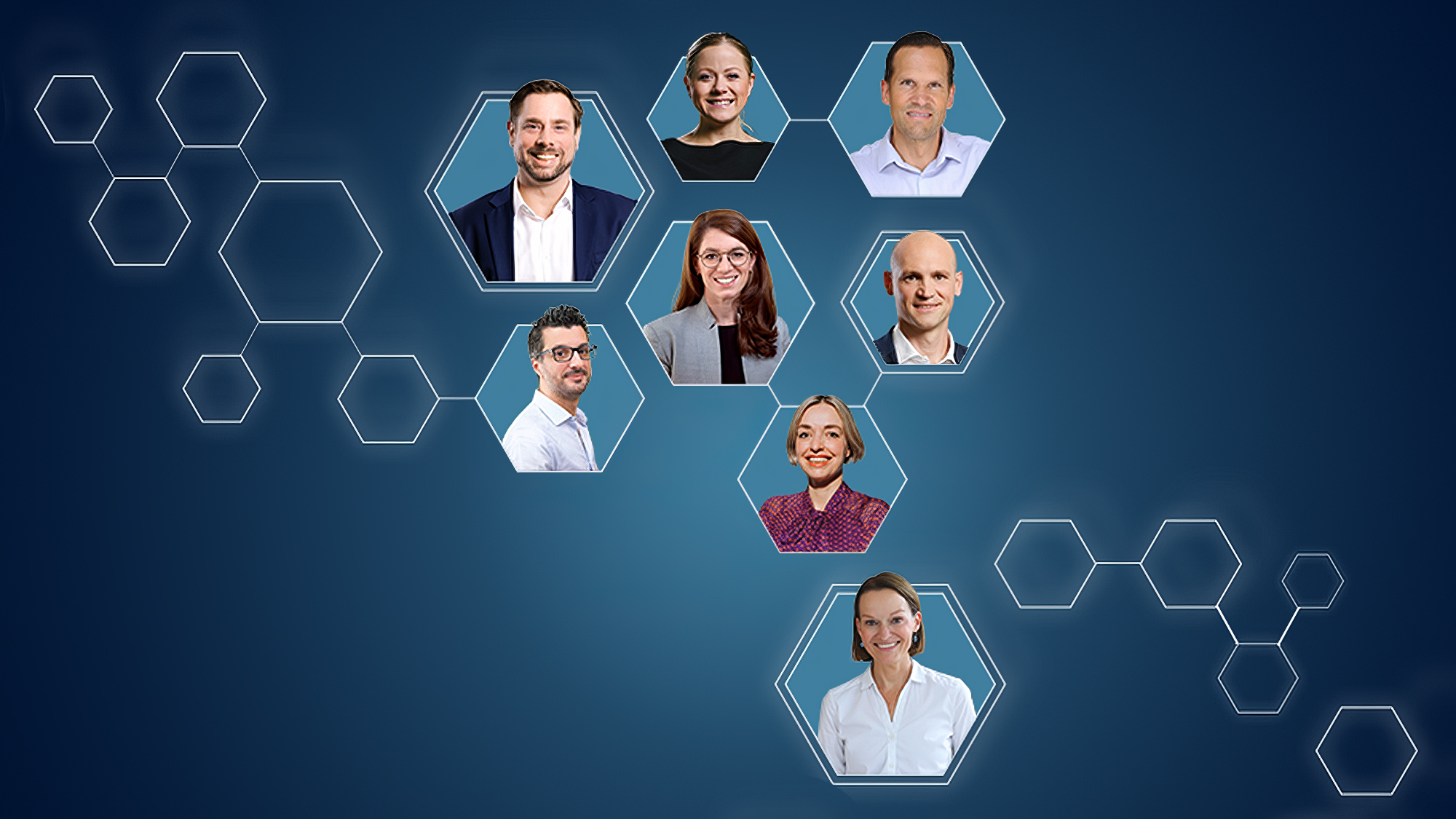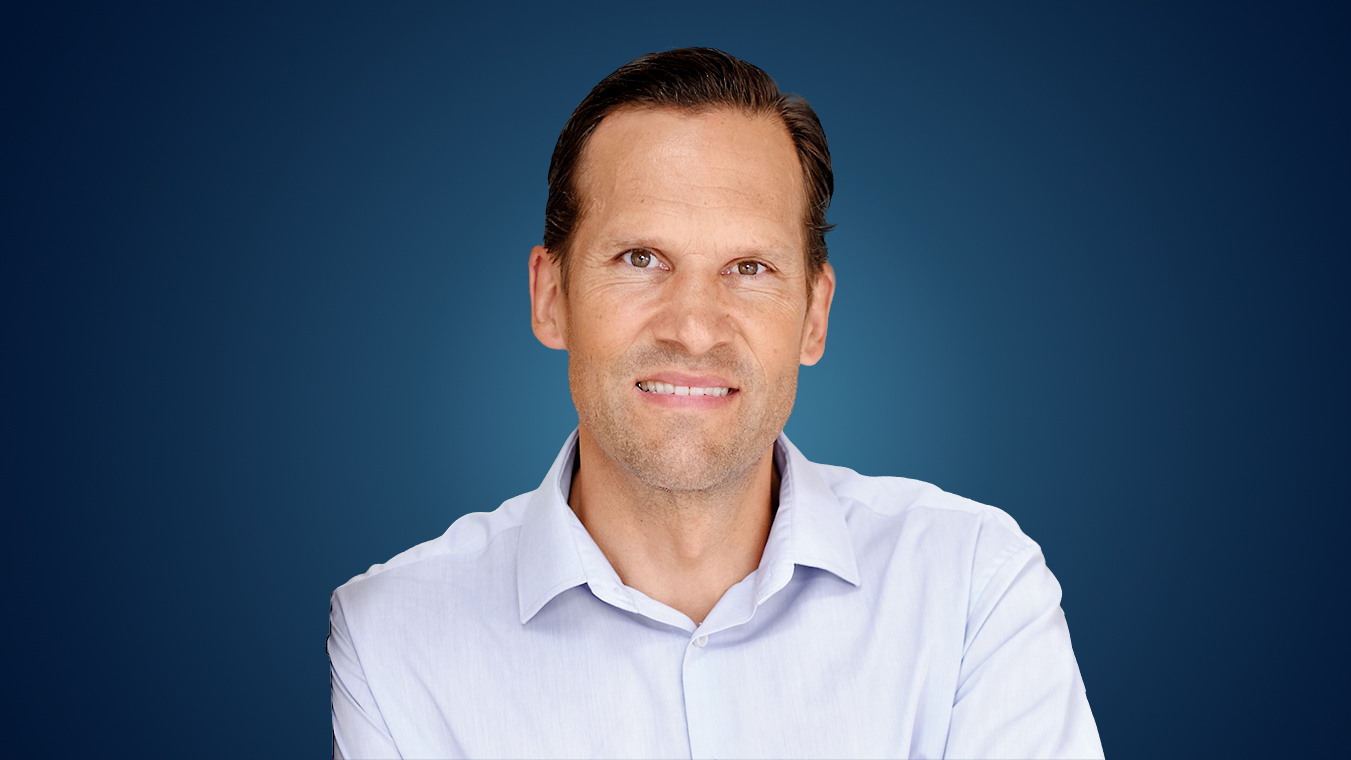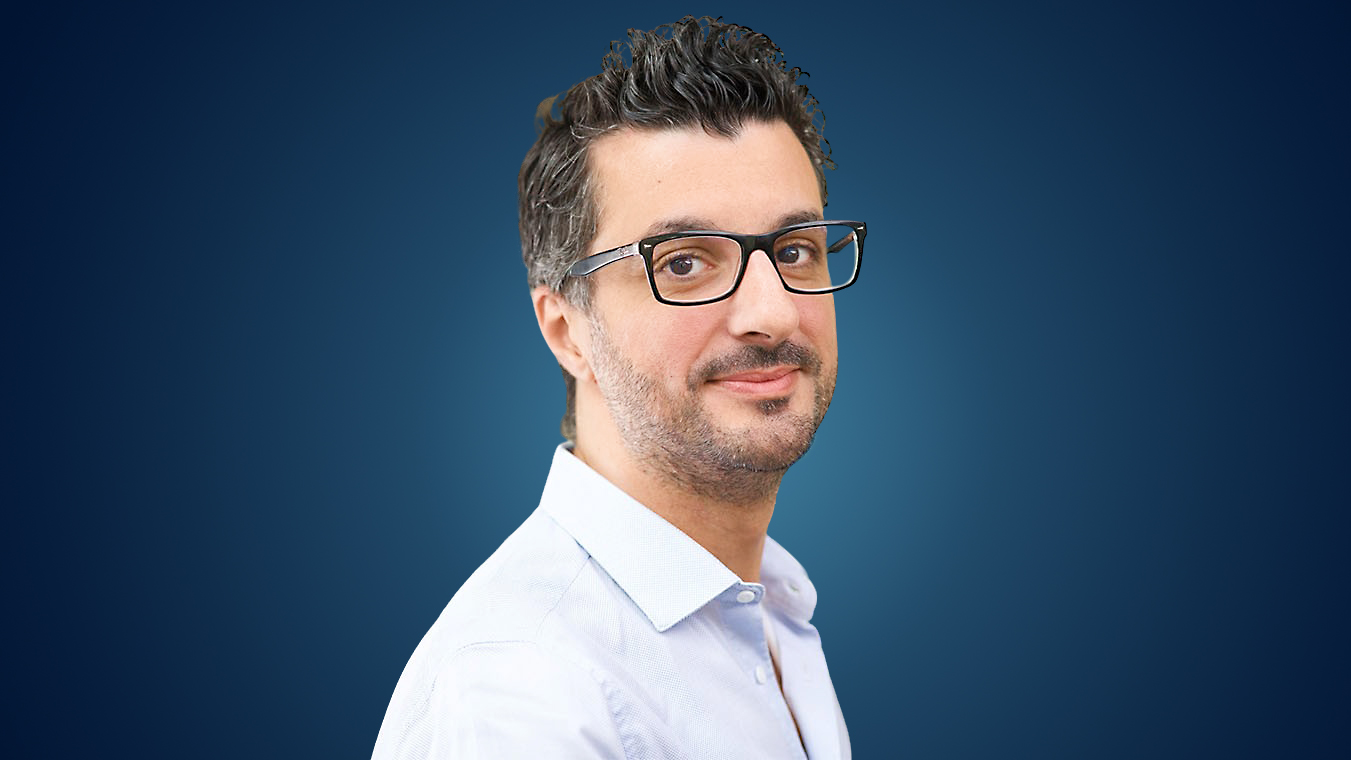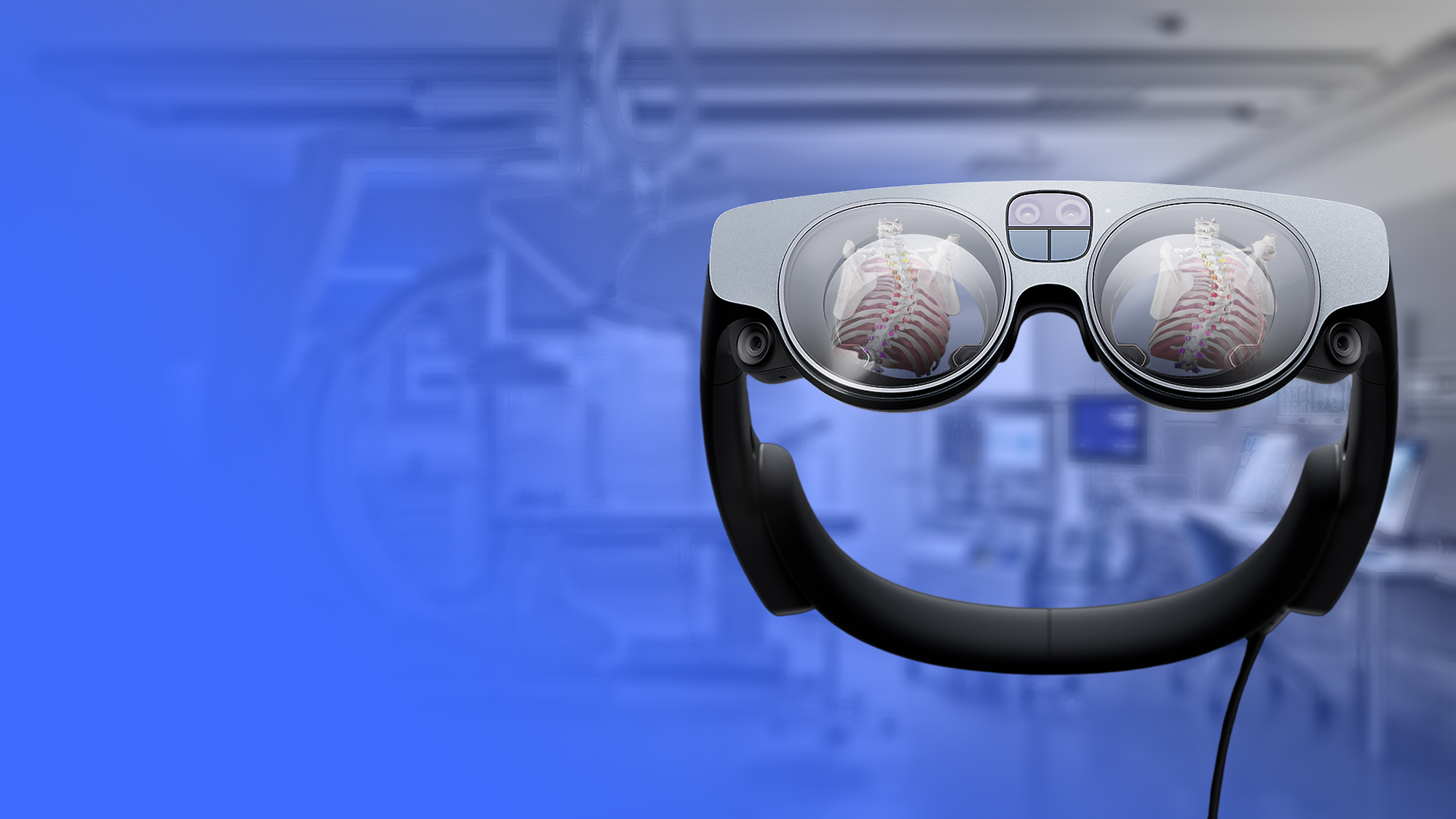More Precision
for Patients
Healthcare is about to enter a new paradigm. Under the heading “personalized medicine,” experts in diseases, genetics, pharmaceuticals, and IT are focusing on individualized treatments and medications in targeted ways. Insiders expect the new technologies to trigger enormous changes that will affect all stakeholders in the sector. Porsche Consulting The Magazine asked leading experts for their thoughts on these developments.
10/2022

Dr. Roman Hipp, Senior Partner and Global Head of Life Sciences Practice at the Porsche Consulting management consultancy, therefore sees major opportunities in the expansion of personalized treatment. “The volume of available medical data, which can be analyzed with artificial intelligence, is steadily rising. Added to this are the advances in genetics. Together, they are creating enormous potential, so that even more individualized treatments can soon become reality.”
The future of personalized medicine is already here
The key to greater success here is what is called “personalized medicine,” which essentially means giving patients the right dose of the right medicine at the right time. That is not a distant utopian dream, says Hipp. On the contrary: “The future of this new and precise form of medicine is already here.”
Patients are benefiting today
One example can be seen in treatments for breast cancer. Around 20 percent of patients with breast carcinomas are carriers of a strongly overexpressed HER2 receptor. If this is confirmed by genetic testing, personalized treatment with Trastuzumab antibodies can be offered. The antibodies bind to HER2 receptors and thereby inhibit the growth of cancerous cells. The method is not effective, however, for patients who do not have an overexpressed HER2 receptor.
This is one of many examples already governed by the principle of applying more targeted forms of treatment to certain groups of people. “We expect to be seeing personalized methods applied on a wide scale as of 2030,” says Hipp, who heads the Life Sciences division at Porsche Consulting. “As we work up to this ability, the healthcare system as a whole will continue to transform—in fact, we’re on the verge of a real breakthrough.”
Digitalization is driving development
A crucial driver of this development is the increasing degree of digitalization. According to Hipp, the ability to analyze large volumes of data and information will make it possible to identify heretofore unknown causes of disease. The use of smartwatches, smartphones, and other wearables on an everyday basis is already generating new and individualized information. “Real-world data are enabling scientists to develop even more effective treatments and helping doctors make their diagnoses ever more precise.”
But that is just the beginning. While Germany is still debating the question of digital health records, many experts are already talking about digital twins. These are digital copies of each and every individual, containing information about their biological functions, gene expression, and needs for preventive care. As Hipp explains, “In the future we’ll be able to test potential therapies on a digital twin first in order to assess their effectiveness as well as their side effects.”
New opportunities for companies
Personalized medicine is promising not only for patients. It is also opening new horizons for companies. “The importance of personalized medicine will keep growing for everyone involved in healthcare, and ultimately lead us to rethink what we mean by health,” says Hipp. “Before reaching that stage, business leaders, policymakers, and society as a whole will have to master the challenges that inevitably accompany new developments.”
Three-phase model for success
In his work as a consultant and business expert, Hipp concentrates on companies seeking to seize new opportunities in a context of dramatic change. These companies generally need to think through three phases before they invest in personalized medicine as a business field (see info box). The first step consists of strategic decisions on the extent to which they want to add personalized treatments such as cell and gene therapies to their portfolios. “The main question here is whether they possess the core expertise or can find partner companies to enter this new market—because only then does it make sense to invest,” says the expert from
Porsche Consulting. If a company can answer this question with yes, the second phase consists of “aligning processes, organizational structures, and employee abilities toward the target. To put the strategy successfully into practice, they will also have to efficiently manage small-scale production processes and a more complex supply chain.”
Inga Bergen: “We need a holistic take on health”

Inga Bergen is an entrepreneur and expert on innovation and digitalization in the healthcare sector. She built up the welldoo digital health software service provider as its CEO, as well as the Magnosco start-up, which is advancing skin cancer diagnostics with the help of laser systems and artificial intelligence. In her Visionäre der Gesundheit (“healthcare visionaries”) podcast she discusses cutting-edge topics with other experts in the field. Her new book of the same title will come out in the fall 2022.
Testing treatments before trying them
If this ideal is to be achieved, however, a new way of thinking about healthcare is needed. Bergen speaks about having to develop a “holistic take on health.” This approach, which focuses on the patient and all of their data, sounds promising. The hope is to gain a precise picture of the individual effects of any given medical intervention, preferably before trying it out. “This could be done by means of a digital copy of that person, which reflects their biology, genetic material, and other specific features,” she says. She would therefore support the idea of creating “digital twins,” an aim also defined as visionary by Roman Hipp, the life sciences expert. According to Bergen, digital twins would be of major benefit to both patients and physicians. “We could check the effects of a treatment before actually applying it. Afterward, we could also determine how it worked.”
The approach seems revolutionary. And Bergen insists that appearances here do not deceive. “Personalized medicine will fundamentally change the entire healthcare sector,” she predicts. The healthcare industry could conceivably develop into a “hyperlocalized economy” to provide patients with medical treatment tailored to their individual needs. Medications would then be produced directly at the point of care, similar to how CAR T-cell therapy is conducted in part today, or to take an entirely different example, to how providers such as Amazon’s Pillpack operate.
New incentives needed for change
These developments are not a foregone conclusion, however. Healthcare systems need new and different incentives to put visions such as these into practice, explains Bergen. Moreover, further investment in innovations is needed to make personalized and individualized medicine possible in the first place. “Money alone is not enough, because the innovations are based in large part on data,” she says. “In order for us to know exactly what will help whom, the data have to be available in digitalized and standardized form.”
Open discussions about data
Bergen therefore views current public debate on this topic as an obstacle to achieving more precision-based forms of medicine. “Media reports are often marked by skepticism as soon the question of health data comes up. The emphasis here shouldn’t be on fueling fear but rather on how sharing data can benefit patients.” The expert, who also runs a podcast on healthcare, urges open discussions and a new look at the topic. “When patients realize they’re getting something from sharing their information, they’re willing to do so. We need a positive, future-oriented narrative in our society in order to clear the way for innovations in Germany.”
Dr. Bernd Boidol: “What was a death sentence 20 years ago is now a chronic condition”

Dr. Bernd Boidol became CEO of the Vienna-based pharmaceutical start-up
Proxygen in September 2020. He had previously worked for Porsche Consulting as an expert in the medical technology and pharmaceutical sectors. Proxygen is creating a platform to systematically study what are known as molecular glue degraders. With their capacity to target, “glue” to, and thereby degrade pathogenic proteins, these molecules could revolutionize drug development. In June 2022 the start-up entered a 500 million-euro partnership with the German pharmaceutical giant Merck to do further research on glue degraders.
Developing and successfully applying precise treatments
Boidol therefore prefers to talk about “precision medicine.” For him that would mean the following approach: “The first step is to use the latest technology to gain an extremely precise understanding of the individual condition, and the second is to find and offer a very precise treatment for exactly that condition.” His strong emphasis on understanding the condition is based on very sound reasoning. “The molecular causes of an illness are often underestimated—but we can only develop and successfully apply a precision treatment if we have thoroughly understood the condition.”
Although Boidol may define the matter in somewhat tighter terms, he and many other experts agree on one thing: these new methods have already led to enormous advances in oncology in particular. Chronic myeloid leukemia is one example. A specific genetic mutation is often a causal factor in this type of leukemia. If clinical tests detect the mutation, a new type of medication can be given that selectively binds the genetic variation and suppresses its function—with only minimal side effects. As Boidol notes, “What was a death sentence twenty years ago is now a chronic disease that can be treated for ten or fifteen years.”
Progress only possible with more data
Another point on which the Proxygen CEO agrees with most experts is that rapid progress in precision medicine can only be made if more data from patients become available. “The data are there,” he says. “The problem lies in the strict and therefore limiting data protection regulations.” And in fact one might ask why hospitals cannot sell their data at least in anonymized form. After all, the data would be used to develop medications that could help gravely ill individuals and thereby reduce suffering. “I think that should be possible,” he says. The key thereby is to ensure that “the focus is on what benefits patients.”
Leave the pricing to companies
Boidol does not currently see an acute need for additional measures specifically designed to boost these new methods to a breakthrough. As he explains, “Many things that would advance the pharmaceutical industry in general would also be helpful from a precision medical perspective.” In his view, progress would already be served by leaving the pricing of certain medications such as antibiotics to companies and refraining from imposing price caps. “The rapid and successful development of the Covid vaccines is a good example of the level of medical and competitive benefits that policy can have.”
Dr. Dorothee Brakmann: “We’re going to stop diseases before they set in”

Dr. Dorothee Brakmann is a member of the management board of
Janssen Deutschland and director of its oncology/hematology division. Her career at Janssen Deutschland began back in 2008 as head of health policy. She had previously worked as a hospital pharmacist in the UK, for healthcare funders, and on business software solutions for pharmacies. The Janssen pharmaceutical company is part of the Johnson & Johnson global healthcare group.
Promising innovations in the field of personalized medicine are expected to make this possible. “We have to get away from the ‘one pill fits all’ approach and adopt treatments tailored as closely as possible to individual diagnoses and needs,” she says. “We have to move beyond the repair approach to sick people—which is more of an illness than a health system—and establish a healthcare system worthy of the name.”
The right individual treatment at the right individual time
The good news is that the first steps have already been taken and we’ve entered the new world of precision medicine. Citing current information from the German Association of Research-Based Pharmaceutical Companies (vfa), Brakmann notes that 97 medications authorized in Germany meet the criteria of targeted treatment, most of them in oncology. Common to all is a consideration of individual genetic characteristics. In other words, before one of these medications is administered, specialists test the patient’s genetic material. The biochemical and genetic preliminary assessments show which preparations will work well and which will probably not. “This is a way to give the right substances to the right patients at the right times,” she says.
Oncology is only the beginning
There’s a good reason for why this approach is being used especially in oncology. “Cancer is a disease of the genes,” says Dorothee Brakmann. It therefore makes sense to look for relevant genetic features and examine them before prescribing treatment. Janssen is working in this area and has developed numerous active agents for various blood, lung, prostate, and bladder cancers. Precision medicine is not restricted to treating cancer, however. As Brakmann explains, “Oncology has made a start, and other areas are following.”
Nearly all the fields of research at Janssen take a personalized approach—“with all the attendant problems,” observes Brakmann. One challenge has to do with the considerably smaller patient cohorts. Participants are selected on the basis of genetic features needed for clinical studies focusing on ever more specific subgroups of a particular disease. Another challenge concerns the high costs required to develop medications for only a few patients, albeit with targeted effects. “Healthcare systems do not command endless resources,” says Brakmann. “We, too, are well aware of this.”
The health system’s magic triangle
The pharmaceutical expert therefore draws a “fine line” between three determining factors in a health system: patient access to medication, affordability, and incentives for research companies to pursue innovations. “We need to maintain a good level of dialogue among everyone involved,” she says, while noting that’s easier said than done. “When you focus your efforts on one factor in this magic triangle, you always affect the other two as well.”
While Dorothee Brakmann attests to the good work done by regulatory authorities, she sees room for improvement in the reimbursement system—including in Germany. “There are far too many old-school models in operation here,” she says with reference to the extensive randomized clinical studies that funders prefer. “They’re the gold standard of course,” she concedes. “But if you’re developing medications for very small groups of patients, it’s very difficult to set up that type of comprehensive study.” To enable precision medicine to take a quantum leap forward, adjustments are needed to the system itself—over and above the release of anonymized health data that Brakmann and many other experts are calling for.
Preventing disease with the aid of biomarkers
If we devote our efforts to the research part of the healthcare system’s magic triangle, a clear road stretches on into the future—namely a future in which we stop diseases before they have a chance to set in. At Janssen this approach is called “disease interception.” It functions similarly to that for personalized cancer treatments: by identifying biomarkers such as specific gene mutations that make certain diseases more likely. “If you detect this type of predictor, there’s an especially high likelihood that the disease will be found in that individual even before any symptoms appear. You can therefore take countermeasures at an early point in time to prevent it from breaking out.”
The more biomarkers can be detected with the help of AI-supported analyses and the more anonymized patient data are made available, the easier it will be for companies to develop better treatments. Brakmann is convinced we won’t have to wait too much longer. “The first treatments could come onto the market in four or five years,” she says. Which sounds like science fiction might in fact become reality.
Professor Christoph U. Herborn: “We’re already offering personalized therapies”

Professor Christoph U. Herborn became CEO of Bergman Clinics in Germany in August 2022. Headquartered in Naarden in the Netherlands, Bergman Clinics is building an international platform for highly specialized, plannable medical care and seeks to generate further growth especially in Germany with the help of Herborn. Previously the medical director and one of five managing directors for the
Asklepios Group, which runs around 170 facilities in 14 German states, Herborn gave the interview for this article in his former capacity as managing director of Asklepios.
Trained as a radiologist, he became CEO of Bergman Clinics in Germany in August 2022 but gave the interview for this article while still the medical director and one of five managing directors for the Asklepios Group. The diagnostic processes he refers to are part of treatment strategies based on molecular genetic testing for tumors. And they are clearly leading to successful results at Asklepios. “By combining conventional chemotherapy with new antibody therapies we’re able to arrest tumor growth or even reduce the size of primary tumors,” reports Herborn.
Tumor board decides on individual cases
Although many patients are still unfamiliar with this type of treatment, they only rarely have reservations about it, says Herborn. “The vast majority are open to the new methods.” Their confidence is reinforced by the fact that Asklepios does not assign them to one department alone. “Cancer medicine at our clinics is an interdisciplinary affair.” The heart of the multidisciplinary team is the “tumor board,” consisting of experts from oncology, radiology, pathology, radiotherapy, and surgery. “They confer to make the best treatment decisions for each individual case.”
Step one consists of funding
When the expert committee selects an individualized treatment, the first question for the former Asklepios managing director has to do with funding. “Personalized treatments are often very costly and generally not included in standard medical coverage,” he notes. He therefore either had to either negotiate with the insurance companies or pursue the treatment as part of a study. “In such cases the pharmaceutical industry assumes the costs.”
The professor’s emphasis on funding might raise some doubts. Does that mean only patients who are privately insured will receive these effective but expensive treatments? Might the rise of precision medicine even lead to two divergent classes of medical care? Herborn, however, sees no reason to fear that the innovative treatments will acquire an elitist character. “Everything that’s available and can be offered as part of good medical practice is in fact on offer. Nothing needs to be democratized or made any more accessible than it already is,” he declares.
New hope for cardiovascular patients
With the new forms of treatment already offered at clinics on a regular basis,
Herborn is looking further into the future. “Over the next ten or fifteen years I expect the new personalized forms of treatment to be applied not only in oncology but also to other diseases such as cardiological and circulatory conditions.” Their treatment currently focuses on risk factors from unhealthy lifestyles that lead to high blood sugar or lipid levels. “A good way to supplement this approach would be to determine the ideal preventive measures on the basis of cardiovascular profiles.”
Professor Ariel Dora Stern: “Personalized medicine will become the new standard”

Ariel Dora Stern is Associate Professor of Business Administration at Harvard Business School in Boston, a faculty member of the Harvard-MIT Center for Regulatory Science, and holds a guest professorship at the Digital Health Center of the Hasso Plattner Institute in Potsdam. She studies the healthcare sector with a focus on innovation management, digital health, and health economics in general. She serves on the scientific advisory board of the German Society for digital Medicine (Deutsche Gesellschaft für Digitale Medizin) and advises start-ups in the healthcare sector. Before entering academia she worked as an economist on Wall Street, at the Federal Reserve Bank in New York, and at the German Institute for Economic Research (DIW).
“Generally speaking, however, we’re now developing treatments that are considerably more targeted and precise than has ever been possible before.” These recent developments are what ultimately make the difference for the Harvard professor. “Over the short or long term, we can assume that personalized medicine will become the standard treatment.”
That being said, personalization will not proceed at the same pace for all diseases. Stern expects the near future to bring advances for cancer in particular, but also more targeted approaches for ophthalmological and hematological disorders. “Patients will enjoy substantial benefits in these settings where their medications will be increasingly tailored to their respective genetic makeup or the mutations from their specific type of cancer.”
For researchers, outdated approval processes present an obstacle
There are a number of hurdles to clear, however, before many personalized treatments can achieve breakthroughs and become widely available. Ariel Dora Stern speaks of an “institutional mismatch” between FDA and EMA regulatory framework conditions on the one hand and research requirements on the other. She advocates for what she calls “regulatory innovation,” noting that “Our current medical product regulations are a product of the previous century. They simply no longer reflect the needs of the next generation of products or cutting edge practices in therapeutic research and development.” A good example is the need to set up platform studies instead of traditional clinical trials. “Platform studies focus on the overall clinical picture,” she explains. “They let us divide groups of patients into different arms of the study based on biomarkers and to test different medications at the same time. Because established regulatory approaches were not designed with such studies in mind, getting them off the ground has been a considerable challenge—despite the fact that they offer clear advantages for both patients and clinical investigators.”
Ariel Dora Stern doesn’t try to downplay the considerable time and funding required to set up a platform study. But she also says the advantages far outweigh the disadvantages. “This type of trail isn’t over after you’ve conducted the first series of tests—the platform structure means that meaningful research can continue even after specific clinical questions have been answered. This means you can keep researching that disease in a sustainable way.” In addition, different statistical models are applied that facilitate dynamic analyses and thereby yield faster and more efficient results in a statistically rigorous manner.
Greater trust among competitors
Regulations are not the only factors holding up these studies. The organizations that conduct platform studies are designed as open systems. In other words, they aren’t just a single enterprise but instead can consist of multiple participants. “This type of setup is complicated, of course, when you have competitors working together,” observes Stern, who also currently holds a guest professorship at the Digital Health Center of the Hasso Plattner Institute in Potsdam. Her solution: “Starting a non-profit foundation or identifying another trusted, independent third party to coordinate and run the study has proved to be a good way of building trust. We have seen this, for example, in the work of the Global Coalition for Adaptive Research (GCAR) in the United States.” Once a platform study is established, its infrastructure makes the entry requirements lower than those for launching a traditional clinical trial. “This allows smaller biotech and pharmaceutical companies study diseases and populations that they may not otherwise have investigated, and also creates incentives to develop treatments for rarer diseases.”
Healthcare systems determine drug access
Whether and when people can benefit from personalized medicine will depend on more than the research itself. Stern notes that although the new treatments are often very effective, they can also be very expensive. “Each country’s healthcare system will therefore play a key role in providing access to these treatments.” Current approaches to funding the corresponding medications in the USA can look baffling to German eyes. “Payment models there range from ‘drug mortgages’ (where expensive treatments are paid off over time) to having the amount of reimbursement depend on the success of the treatment.” Europe will certainly be taking a different approach here, although innovative payment models are already being piloted.
Dr. Yacine Hadjiat: “We’re translating new technical capabilities into tangible health solutions”

Dr. Yacine Hadjiat is Global Head of Digital Health Solutions at Biogen Digital Health (BDH), having previously worked for leading life science companies as well as start-ups and government agencies in the E.U., U.S., and Asia. Created in 2021,
Biogen Digital Health is a global unit of Biogen, dedicated to pioneering personalized and digital medicine in neuroscience.
For Hadjiat, these digital biomarkers provide revolutionary data when it comes to tracking the progression of multiple sclerosis and other neuromuscular diseases. With Cleo and Konectom, he has already launched solutions that make patients’ lives easier using precisely these technologies. Cleo, for example, provides multiple sclerosis patients with daily support, information, tips, symptom tracking, reminders, and other customized programs. The download data shows how highly patients value this app: as of 2022, Cleo has been downloaded over 600,000 times worldwide. The Konectom platform, in contrast, focuses on the improvement of neurological disease measurement. It uses smartphones and wearable sensors to enable a much higher resolution in the way we track, monitor, and measure neurological diseases.
Konectom takes into account the patient’s key neurological functions, from cognition to fine and gross motor skills.
The goal of Hadjiat and his team at BDH: to use technology to address patient needs in a goal-oriented manner and drive the change toward a more patient-centered and better care. Digital biomarkers play a major role in this endeavor: they not only allow people to track and better manage their own disease but also enable their neurologists to monitor progress more accurately and with higher resolution from afar, all thanks to technology.
Using apps to predict clinical conditions
Central to such solutions is smartphone sensor technology, which helps to continuously gather relevant health data. If critical patterns emerge, neurologists are alerted and can help their patients at an early stage if necessary. According to Hadjiat, the potential of the new technology thus arises from observation of conditions that progress slowly and the possibilities of this technology to predict clinical conditions before they occur.
Digital health solutions are on track to become the status quo
Yacine Hadjiat is certain that digital health applications will soon be part of the medical standard. But simply transferring solutions from the offline to the online world is not enough, he says. After all, he notes, digital health and technology offer a much greater promise: “Through digital health, for the first time, we have the possibility of translating new technical capabilities into tangible health solutions—that’s something completely new.” Hadjiat notes that he will have reached his goal when the digital health hype subsides, and digital solutions and applications have become an integral component for medical standards of care. “Or, to put it another way, when digital health is the status quo.”
Susanne Baars: “Personalized treatments should be available to everyone on the planet”

Susanne Baars is senior global thought leadership manager at Siemens Healthineers in Erlangen, and responsible for expanding precision medicine. She also directs SocialGenomics, a start-up she founded in 2018 to help patients by means of an artificial intelligence-driven network that extracts information about their condition and tumors to digitally connect them with others in a similar condition; share best practices to find personalized treatments; and collect real-world data to improve outcomes.
Personalized medicine is a passion for Baars. In her view, it’s neither a niche nor an add-on to established methods of treatment, but rather the essence of medical care. It already helps many patients today, and can offer more effective and less arduous forms of treatment to those diagnosed with cancer and rare conditions. What may sound like a breakthrough to many people is just the beginning for Baars. “We’re talking about a revolution here,” she says. “The tremendous increase in computational capacities and global connectivity is what will really unleash the full power of personalized medicine.”
Precision medicine fueled by pattern recognition
Predictive bioinformatics and machine-learning models make it possible to gather millions of data points from the real world. These can be patient data, clinical data, laboratory tests, genomics or imaging. Compiling these data is just the first step. “Data alone can’t save a single life,” notes Baars. True medical progress, she adds, lies in analyzing and learning from these comprehensive data points, detecting patterns, and making actionable insights accessible for physicians and patients independent of their geographic location. No two cancer patients are the same. So, no two treatments should be either.
The aim is not only to provide more targeted treatments, but to redesign the healthcare system to make it more intelligent. “Together with Varian, the leading cancer-care company that we acquired last year, we’re leveraging logic and artificial intelligence to build a comprehensive oncology ecosystem that transforms workflows.” For example, the path from diagnosis to treatments can be accelerated from weeks to hours. For patients, hospital providers, and society this makes a huge difference. In Baars’s view, we need to move beyond the current system of “sick care” and finally attain actual “health care.” As she puts it: “We have the technologies and the expertise, but if patients don’t have access to solutions, then it’s missing its purpose. The data we gather in the course of personalized medical care will enable the shift towards early detection and prevent people from developing these conditions in the first place.”
Personalized medicine is not merely a matter of refining a few parts of the old system. The vision inspiring Baars is one of transformation—organizing lifesaving information and making it accessible for everyone to give more patients access to personalized treatments, when and where they need them.
Early and highly precise diagnoses lower medical costs
According to Baars, this new approach will reduce illness and suffering—while also saving a great deal of money. For example, many cases of cancer today are not diagnosed until they have reached the most advanced stage or have already spread. Suitable treatments at this point are not only difficult but also likely to need multiple different interventions, increasing side effects for patients. This means longer hospital stays for patients and also higher expenses for healthcare systems. “If we can diagnose cancer at an early stage, we can really cure patients and it doesn’t cost as much,” she explains.
In order to reach patients early on, patient-supporting tools such as digital twins and multi-disciplinary oncology platforms will play an ever greater role. A patient digital twin integrates clinical data from disparate sources—and turns them into a virtual representation of the patient that can be used to free up physicians’ time and run simulations to reveal future health scenarios. When algorithms detect critical patterns, the corresponding tools will not only alert people but also tell them where in the healthcare system to go for a check-up. “Combining a digital twin, AI technology, and personalized care enables us to achieve the best possible outcomes for patients,” says Baars. This is based on the pathological and molecular specifics of their tumors, imaging characteristics, treatment history, and evidence-based treatment options in discussions with physicians and providers. “The challenge here is to redesign our systems around patients,” she says.
Here is where Baars’s arguments come full circle. “I envision a world with globally connected personalized health pathways designed to drive efficiencies and deliver world-class treatment along the cancer continuum to increase impact where it matters most: helping patients,” she says. The huge volumes of data needed to help patients with tailored treatments can only be gathered by holistically connecting patients, physicians, governments, and industry in a true team effort through digital solutions on an international scale, she believes. In short: the better we collaborate and the greater number of people who benefit from precision treatments, the more things will improve for everyone. This, then, is also a powerful impetus for countries with advanced healthcare systems to make precision medicine accessible to everyone on the planet.
Opportunities and risks for companies
New balance between data protection and innovative power
One of the key takeaways from the interviews with experts is that medical information and digitalization will both play considerably greater roles in the context of personalized medicine. “We recommend that pharmaceutical and medical technology companies expand their data strategies and invest in relevant new products and services,” says Hipp. If this new market is to offer opportunities for development, transmission of at least (semi-) anonymized data will have to be streamlined. “It’s crucial to have secure data management that also enables innovative breakthroughs,” says Hipp. The aim here has to be a “new balance” that fosters research and innovation to promote human well-being while also providing the highest degree of data privacy. As he notes, “This might not be a convincing approach for absolutely everyone, but we shouldn’t overlook the fact that some innovative health start-ups have already left Germany to pursue research and healthcare innovations in other parts of the world.”
Companies need to adapt to decentralized logistics
The new methods will bring fundamental changes to the pharmaceutical industry. Medications are currently produced in large numbers for broad groups of patients. By contrast, precision medical approaches require the manufacture of individualized medications that address diagnostic details or even integrate patients’ cell material into the production processes. “These individualized means of production, which in some cases will surely be decentralized, will place new demands on logistics and technical systems that companies will have to meet,” says Hipp. In his view, strategies from the automotive industry—such as the “smart factory” principle—can serve as guides for pharmaceutical companies.
It is by no means clear which companies will be able to take the lead in the new field of personalized medicine. Patients will be the winners in any case, according to Roman Hipp. “They can expect faster and more precise diagnostics and more promising treatments, including the prospect of actual cures.”
The three-phase model for success
If a company wants to succeed in the new market for personalized medicine, it has to evaluate the opportunities, assess the risks, and strategically plan each step. Porsche Consulting has developed a three-phase model that makes this possible.
